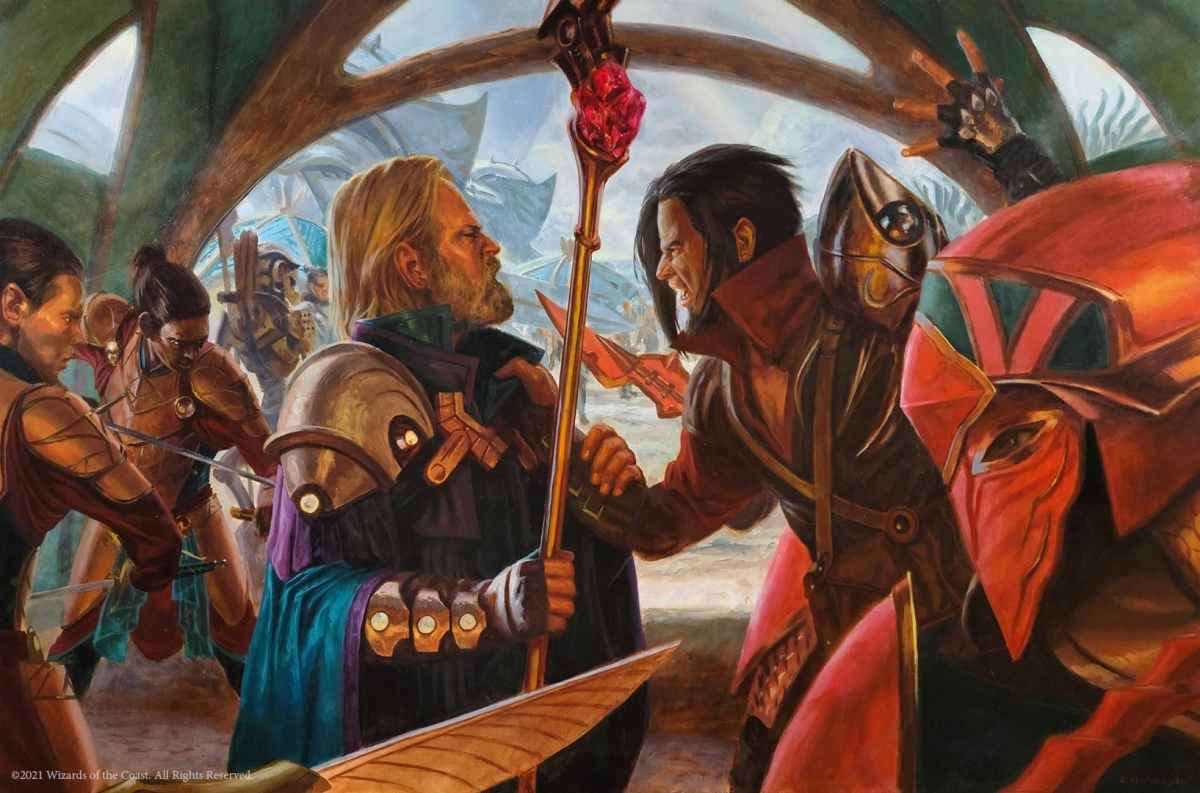
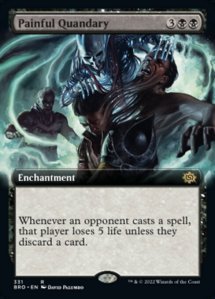
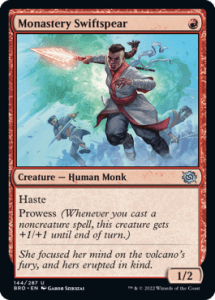
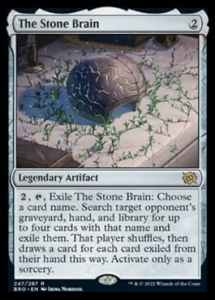
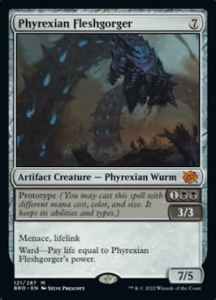
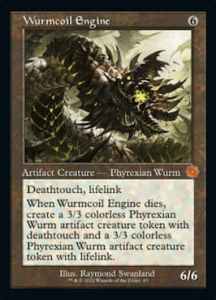
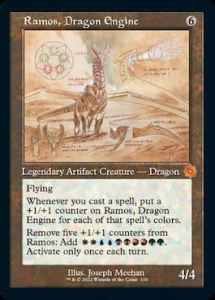
Magic Arena is the home for two of Magic: The Gathering’s digital-only formats: Historic and Alchemy. While Alchemy has largely stumbled out the gate due to its clunky release, Historic has mostly blossomed into a diverse, Modern-esque format that combines cards from throughout Magic’s history with digital mechanics to create a unique deck builder’s playground.
The Brothers’ War is a high-powered set with plenty of splashy Artifacts that will be right at home in Historic. Another aspect of the format is Historic Brawl, the closest thing to Commander that’s available on Arena. It’s a popular format that has carved out a community on Arena and allows a wide variety of decks and cards to show up.
The newest Magic set brings great tools to both Historic and Historic Brawl and may have an impact on the formats. While there is some strong main deck material, the real difference may be seen in the sideboard of established decks that will take advantage of BRO cards to gain an edge. With the future of competitive Magic on Arena seemingly focused on its exclusive formats like Alchemy, Historic, and Explorer, keeping a keen eye on the movers and shakers of Historic will be valuable to securing a spot at the next Magic World Championship tournament.
Here are the best BRO cards for Historic and Historic Brawl.
Monastery Swiftspear
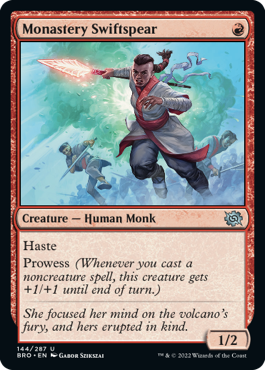
Aggro decks in Historic are powerful. The Mono-Red Aggro list that’s an established fixture in the format likely won’t run Monastery Swiftspear. It’s a tight list that doesn’t need much improvement and Monastery Swiftspear would be more of a lateral move. The inclusion of Monastery Swiftspear in Historic, however, will further open the door for a dominant Prowess-based strategy to arise.
Monastery Swiftspear is a one-drop creature that’s an excellent early-game play. This 1/2 with Haste and Prowess can dish out some quick damage and scale well with spell backup. It will do well in combat due to its high toughness. With Prowess triggers, it’s not unusual for it to attack with three or four toughness, more than enough to survive combat on turn two or three.
Ramos, Dragon Engine
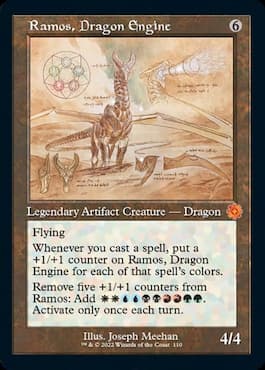
A major part of Historic is the ability to craft powerful rogue decks. A rogue deck is an off-meta list and these kinds of strategies are prevalent in older formats. The large card pool of Historic allows for more options for creative deck builders. One interesting piece that entered the format is Ramos, Dragon Engine. This classic Commander card could be a great option for players looking to play big-mana five-color decks.
Ramos enters Historic as a part of the BRO retro Artifacts. As a six-mana 4/4 the base stats aren’t great, but it rewards playing spells with multiple colors. If Ramos is allowed to stick around it’ll grow into a must-kill threat instantly. It also can act as a source of mana generation to enable splashy turns. The mana in Historic is excellent and can easily support a five-color shell. Combining Ramos with the Domain support from Dominaria United could be a worthwhile journey for the risk-takers on the Arena ladder.
Wurmcoil Engine
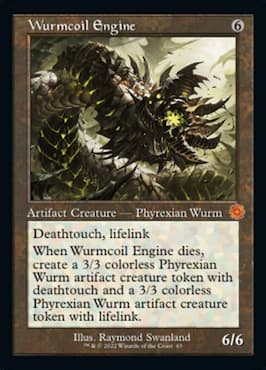
Another retro Artifact, Wurncoil Engine will earn a spot in reanimator decks in Historic. It’s a powerful 6/6 creature with Lifelink and Deathtouch that dies and creates two token bodies. Casting this spell for six mana doesn’t seem too difficult by using Powerstones and Treasure tokens. It’s also worth reanimating and trying to take advantage of the death trigger multiple times. Combine this behemoth creature with cards like Emry, Lurker of the Loch, and a sacrifice outlet and you’ll have a late-game value loop that will help close out the game.
This will also make a great addition to most Historic Brawl decks as a late-game finisher. It can come down and immediately have an impact in combat even if there are no other synergies around to back it up.
Phyrexian Fleshgorger
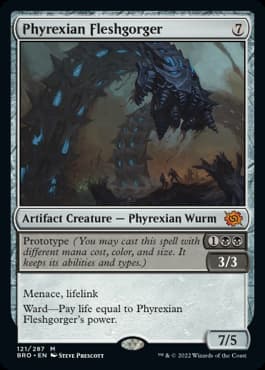
Phyrexian Fleshgorger is slowly becoming a key piece in Standard as a part of the Mono-Black Midrange and Grixis Midrange shells. It has plenty of potential to make a similar impact in Historic because of its powerful Ward ability and scaling power level. Being able to come in on turn three as a 3/3 with Menace and Lifelink will stand as a strong body that will slow down aggro builds. The key to this card succeeding is Ward. Forcing the opponent to either lose three or seven life to use a removal spell to get rid of it is a major hit. In a late-game situation, this may just effectively have Hexproof because the opponent can’t afford to pay the Ward cost.
Whether Phyrexian Fleshgorger finds a home in Historic is also dependent on how it stacks up to other three-mana plays available for whatever archetype is trying it out. It will need to beat out some excellent cards like Graveyard Trespasser, Seasoned Pyromancer, Liliana of the Veil, and Rotting Regisaur.
The Stone Brain
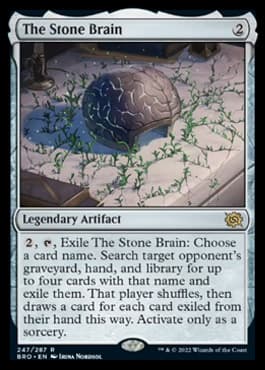
Sideboards make eternal formats dynamic and fun in Magic. There’s no shortage of powerful decks in formats like Modern and Legacy, and what keeps them from overwhelming the metagame are sideboard cards. These tools enable interactivity. Classic sideboard spells include Pithing Needle and Relic of Progenitus, narrow cards that are effective against a specific kind of deck.
The Stone Brain will be a great option to fight against lists that need a specific card to win the game. This includes combo decks like Neoform Combo and creature lists that rely on Collected Company to turbo out threats. It’ll be a worthwhile tool against control decks too. Being able to take out a specific answer or finisher will help bust a potential control mirror wide open in your favor.
Painful Quandary

Painful Quandary is a solid sideboard option that will punish combo decks looking to set up infinite loops that involve casting. Bringing this five-mana Enchantment in will act similarly to Dampening Sphere by shutting down certain combos. Five mana is an expensive cost, but Black decks have an easy time generating mana with Treasure tokens, so it shouldn’t be too difficult. It’ll also just be a nice value piece for late-game situations that will force the opponent to lose a large chunk of life just to cast a spell. This is similar to the impact that Phyrexian Fleshgorger’s Ward ability has when the game gets to a point where the opponent can’t afford to lose five life.

